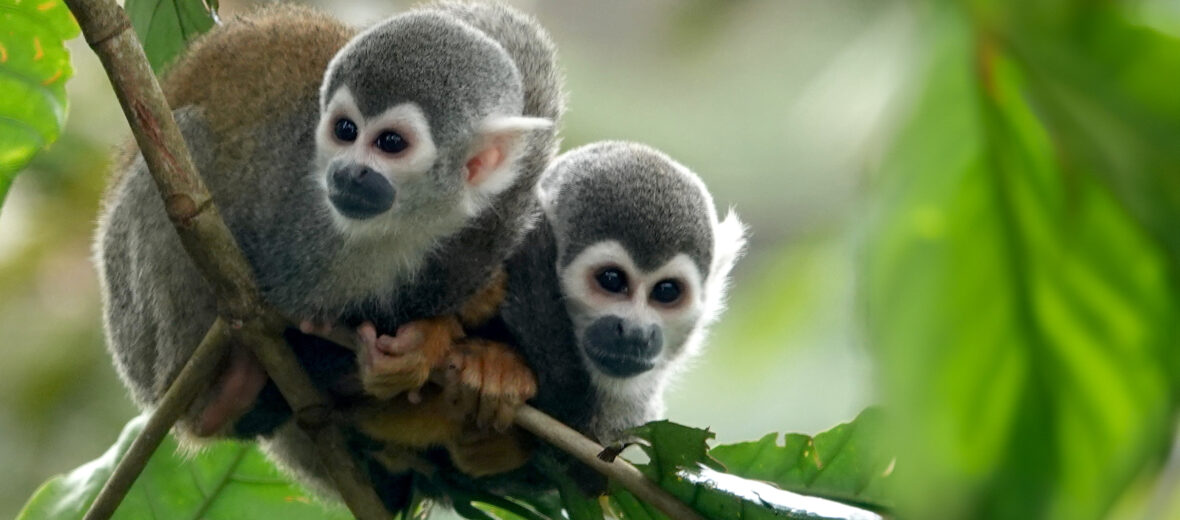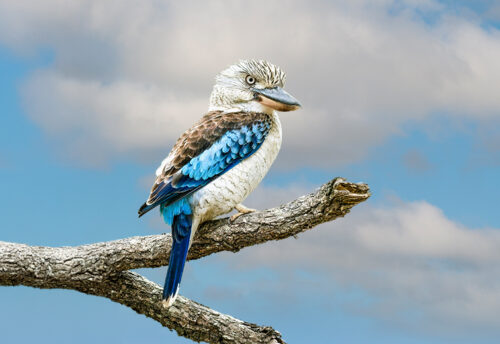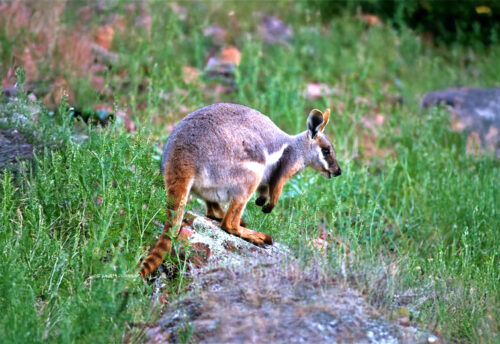
The Humboldt’s squirrel monkey, aka squirrel monkey, dwells among the canopy layer in the tropical rainforests of South America. Even though they face the ongoing threats of habitat loss and destruction at the hands of farming, ranching, oil & gas drilling; habitat division at the hands of roads and railroads, which also result in vehicle strike – being hit by vehicles; hunting; and trapping, the IUCN lists these adorable primates as Least Concern, but their numbers are decreasing.
First the Stats…
Scientific name: Saimiri cassiquiarensis ssp. albigena
Weight: Up to 2.4 lbs.
Length: Up to 13.8 inches, plus up to a 15 inch tail
Lifespan: Up to 27 years
Now on to the Facts!
1.) There are 5 recognized species of these monkeys in 2 main groups.
2.) The common squirrel monkey is frequently captured for sale in the pet trade and sadly often used for medical research.
3.) Up until 1984, all squirrel monkeys were considered to be the same species.
4.) The primary group of the extant squirrel monkeys is believed to have diverged around 1.5 million years ago.
5.) Female squirrel monkeys possess pseudo-penises, that they utilize in displaying dominance over smaller monkeys in their troop, just like how the male squirrel monkeys display their dominance.
But wait, there’s more on the Humboldt’s squirrel monkey!
6.) They are diurnal (active during the day) like other monkeys.
7.) These, like so many other New World monkeys (those from the Americas) are arboreal (spend their lives in the trees).
Did you know…?
Squirrel monkeys are only able to sweat through their hands and feet. Just like dogs can only sweat through their paws.
8.) Their tails are not used for climbing but as a balance while climbing. They also use their tail as a tool.
9.) Troops can consist of up to 500 members! Typically though troops of much smaller sizes are more common.
10.) These primates are very vocal and produce a variety of sounds, such as alert calls warning of predators.
But wait, there’s still more on the Humboldt’s squirrel monkey!
11.) Territory is marked via mostly urine but also feces (poop).
12.) Insects, fruit, seeds, leaves, buds, flowers, nuts, and eggs are all feasted upon.
Did you know…?
As water becomes more scarce, these critters have the ability to release a more concentrated urine in order to maintain the proper ion and water levels inside their body, like camels.
13.) Females undergo up to a 170 day gestation (pregnancy) that yields a single infant.
14.) Weaning generally takes place at about 4+ months old.
15.) If hiding in the shade and their limited sweating doesn’t cool them off, these primates engage in urine washing, where they will urinate on themselves and rub the urine all over their body. As it dries, they subsequently cool down.
16.) Harpy eagles, falcons, snakes, and jaguars all prey on these diminutive primates.
Now a Short Humboldt’s squirrel monkey Video!
Be sure to share & comment below! Also, check out the Critter Science YouTube channel. Videos added regularly!
Want to suggest a critter for me to write about? Let me know here.
Some source material acquired from: Wikipedia & IUCN
Photo credit: iNaturalist



